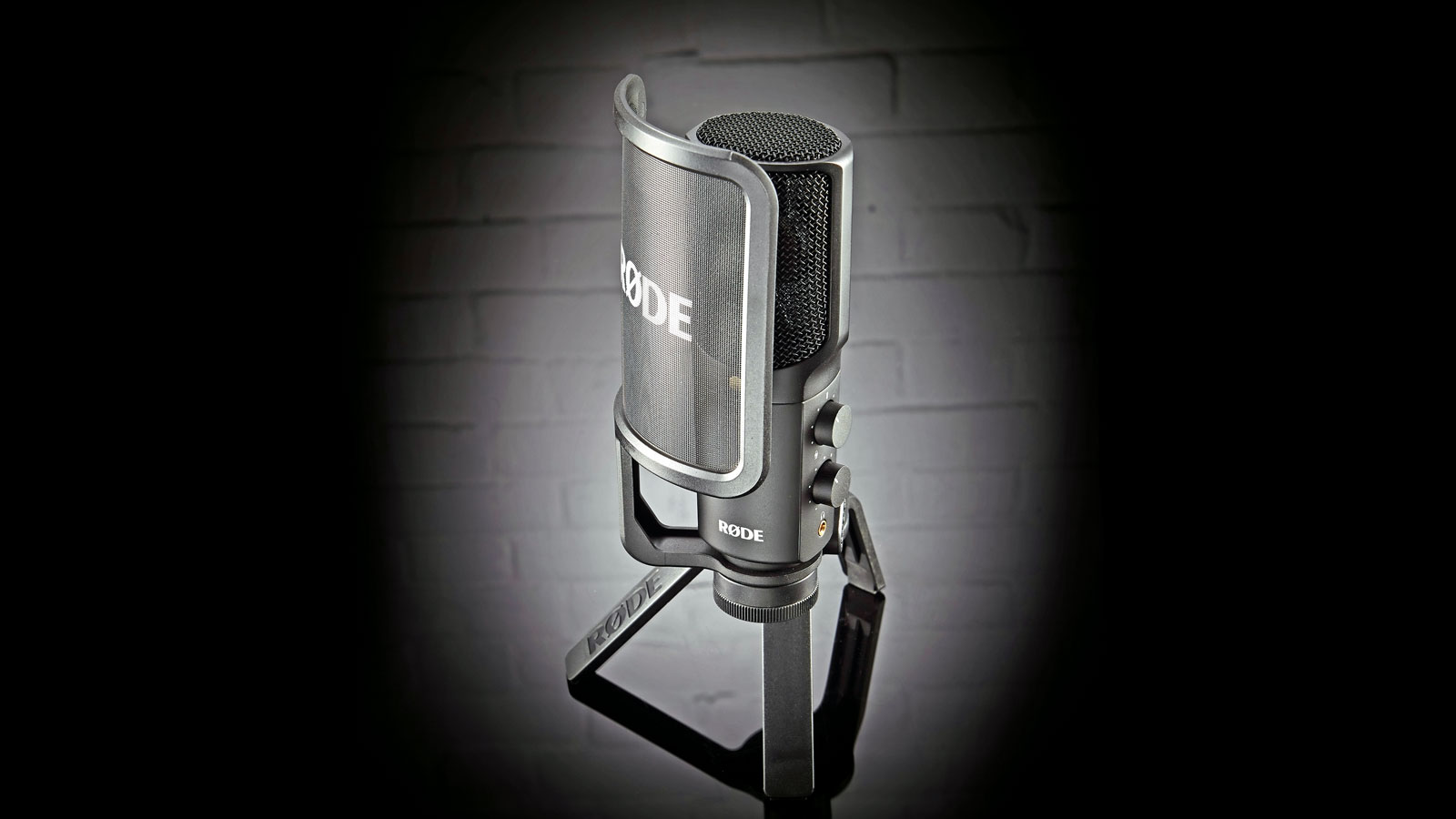MusicRadar Verdict
Your computer's perfect partner for recording vocals and acoustic instruments with minimal fuss.
Pros
- +
Sound quality. Ease of use via USB connectivity. Integrated pop shield.
Cons
- -
Not much.
MusicRadar's got your back
There are plenty of USB-equipped microphones around these days offering the convenience of being able to be plugged directly into your computer without needing a separate preamp or audio interface.
A whole genre of mics has in fact been designed with an integral stand so they can sit on a desk or tabletop at all times, ready for use at a moment's notice.
While you might not want to use one of these for making serious master recordings, they can be perfect for podcasting and very useful for 'quick and dirty' recording when you might just get a musical idea in your head that needs to be recorded before it gets forgotten.
"We used the mic to record into Logic on a Mac and Garageband on an iPad and found it very easy to use"
The new Rode NT-USB can be lumped into this category as it comes with a cute tripod stand and integrated pop shield. But the Australian company believes that it offers much more than 'just' a podcasting mic in that it features a condenser capsule of the same quality as those found in their studio-grade microphones.
The NT-USB is a very solidly built and classy-looking mic. It doesn't come with a suspension cradle but has a nicely-engineered standard mounting that allows it to be angled anywhere within a 180 degree arc and either attached to a mic stand or the supplied plastic (but pretty stable) tripod for sitting on a tabletop. You also get a curved pop shield that sits about an inch in front of the capsule's grille and attaches firmly between the mic's base and its mounting ring.
The USB connection is exactly where you would connect an XLR cable on a conventional mic, while a stereo minijack headphone output nestles on the side of the mic's body below a pair of conveniently-sized knobs - one to control the minijack output's volume and the other to set the balance between the dry sound at source and that coming back from your computer.
Use with a Mac, a Windows machine or an iPad needs no extra drivers to be installed but you will need Apple's Camera Connection Kit or similar to interface the USB with an iPad.
- The best Rode NT-USB and Rode NT-USB Mini deals available today
Quality recordings
"There was little in the way of self-noise and the built-in headphone amp was loud and clear"
We used the mic to record into Logic on a Mac and Garageband on an iPad and found it very easy to use - it's a case of just plugging in and getting on with it. With a cardioid pattern, no pad and no low frequency roll-off switch, there's nothing to adjust apart from the recording level on your connected device (if needed) and your preferred monitoring level and mix.
The first two things we noticed about the NT-USB were that there was little in the way of self-noise and that the built-in headphone amp was loud and clear, providing plenty of volume in our AKG K702s.
On spoken voice and sung vocals it delivered with no lack of bottom-end warmth or top-end clarity and no obvious tonal anomalies. The pop shield does a good job, allowing you to get close in and exploit the low-end from the proximity effect.
There was no sense that this was a mic just to use for demos with a view to replacing the vocal later; while it's not going to rival a U47/Neve combination, it will provide results on a par with many of the commonly-used lower-priced non-USB large diaphragm condensers. We also used the mic to good effect on acoustic guitar and tambourine.
For a device that encompasses the actual microphone, preamp and digital conversion, you may not be expecting too much in the way of performance for just £129, but the NT-USB offers exceptional value. It's robust, couldn't be simpler to use and will give you decent quality recordings.
If you don't already have a large diaphragm condenser and XLR-equipped interface, one of these could be the ideal companion to your DAW.
Trevor Curwen has played guitar for several decades – he's also mimed it on the UK's Top of the Pops. Much of his working life, though, has been spent behind the mixing desk, during which time he has built up a solid collection of the guitars, amps and pedals needed to cover just about any studio session. He writes pedal reviews for Guitarist and has contributed to Total Guitar, MusicRadar and Future Music among others.
“Excels at unique modulated timbres, atonal drones and microtonal sequences that reinvent themselves each time you dare to touch the synth”: Soma Laboratories Lyra-4 review
“I used everything I knew about music”: How Green Day exceeded expectations with their most ambitious song
YouTube just added AI tools that makes musicians, library music and video editors redundant











